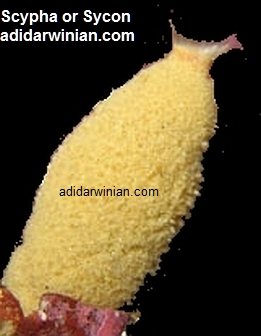This article reveals the Biology of Sponges (phylum Porifera) by studying the Morphology, Anatomy, Histology, and Physiology of Sponges. The author has also included the Reproduction and Development of Sponges.
Porifera is a phylum comprising of the multi-cellular invertebrate animals called Sponges. The term “Porifera” literally means “Pore Bearers”. The animals of this phylum have tiny pores in their body walls, and this characteristic feature is the basis of the name of this phylum.
Porifera includes very primitive multi-cellular animals having only the cellular level of body organization with no tissues and organs. In Porifera (sponges), only cells show division of labor for the purpose of performing specialized functions. All Poriferans, animals of the phylum Porifera, are aquatic with most of them being marine. Sponges are sessile (not mobile) organisms including both solitary and colony-forming types.


